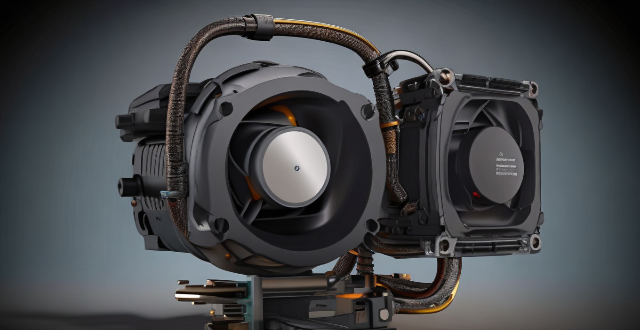This article compares single motor drives and dual motor drives based on their performance, efficiency, cost, and applications. Single motor drives can only control one motor at a time, while dual motor drives can control two motors simultaneously. Dual motor drives offer higher overall torque and better synchronization between multiple motors, but they also consume more power and require more maintenance. Single motor drives are typically less expensive and well-suited for low power applications with simple movement profiles, while dual motor drives are appropriate for high power applications with complex movement profiles requiring precise synchronization. The choice between a single motor drive and a dual motor drive depends on the specific requirements of the application.

Comparison between Single Motor Drive and Dual Motor Drive
Motor drives are crucial components in various industries, including manufacturing, transportation, and automation. They control the speed, torque, and direction of electric motors. There are two types of motor drives: single motor drive and dual motor drive. In this article, we will compare these two types of motor drives based on their performance, efficiency, cost, and applications.
Performance
Single Motor Drive
- Speed Control: A single motor drive can only control the speed of one motor at a time. If multiple motors are required to operate at different speeds, separate drives must be used for each motor.
- Torque Control: The torque produced by a single motor drive is limited to the capacity of the individual motor it controls.
- Direction Control: A single motor drive can only control the direction of one motor at a time. If bidirectional motion is required, additional circuitry or software logic may be needed.
- Synchronization: Synchronizing multiple motors with a single motor drive can be challenging, as each motor requires its own controller.
Dual Motor Drive
- Speed Control: A dual motor drive can control the speed of two motors simultaneously, allowing for more complex motion profiles and coordination between the motors.
- Torque Control: The total torque produced by a dual motor drive is the sum of the torque produced by both motors, resulting in higher overall torque than a single motor drive.
- Direction Control: A dual motor drive can control the direction of both motors simultaneously, making it easier to achieve bidirectional motion without additional circuitry or software logic.
- Synchronization: Dual motor drives inherently provide better synchronization between multiple motors, as they share a common controller that can coordinate their movements.
Efficiency
Single Motor Drive
- Power Consumption: A single motor drive consumes power based on the load demand of the individual motor it controls.
- Heat Dissipation: Since there is only one motor being controlled, heat dissipation requirements are generally lower compared to a dual motor drive.
- Maintenance: Maintenance requirements for a single motor drive are typically simpler than for a dual motor drive, as there is only one motor to monitor and maintain.
Dual Motor Drive
- Power Consumption: A dual motor drive consumes power based on the combined load demand of both motors it controls. This can result in higher overall power consumption compared to a single motor drive.
- Heat Dissipation: Dual motor drives generate more heat due to controlling two motors simultaneously, which may require additional cooling mechanisms or larger heat sinks.
- Maintenance: Maintenance requirements for a dual motor drive are generally higher than for a single motor drive, as there are two motors to monitor and maintain.
Cost
Single Motor Drive
- Initial Cost: A single motor drive is typically less expensive than a dual motor drive due to its simpler design and fewer components.
- Operating Costs: Operating costs for a single motor drive are generally lower than for a dual motor drive, as there is only one motor to power and maintain.
- Replacement Costs: Replacing a single motor drive is usually less costly than replacing a dual motor drive, as there are fewer components involved.
Dual Motor Drive
- Initial Cost: A dual motor drive is typically more expensive than a single motor drive due to its more complex design and additional components.
- Operating Costs: Operating costs for a dual motor drive can be higher than for a single motor drive, as there are two motors to power and maintain.
- Replacement Costs: Replacing a dual motor drive can be more costly than replacing a single motor drive, as there are more components involved and potentially more downtime during the replacement process.
Applications
Single Motor Drive
- Low Power Applications: Single motor drives are well-suited for applications where low power and simple motion control are sufficient, such as small conveyors, fans, and pumps.
- Cost-Sensitive Projects: Single motor drives are ideal for projects with tight budget constraints where the added complexity and cost of a dual motor drive are not justified.
- Simple Movement Profiles: Single motor drives are suitable for applications that require straightforward movement profiles without the need for precise synchronization or coordinated motion between multiple motors.
Dual Motor Drive
- High Power Applications: Dual motor drives are appropriate for applications requiring high power output and precise control over multiple motors, such as large conveyors, mills, and machine tools.
- Complex Movement Profiles: Dual motor drives are essential for applications that require complex movement profiles with coordinated motion between multiple motors, such as robotics, CNC machines, and packaging equipment.
- Precise Synchronization: Dual motor drives offer superior synchronization capabilities compared to single motor drives, making them ideal for applications where precise timing and coordination between multiple motors are critical, such as printing presses and web handling systems.
In conclusion, the choice between a single motor drive and a dual motor drive depends on various factors such as performance requirements, efficiency considerations, cost constraints, and specific applications. While single motor drives offer simplicity and cost-effectiveness for low power applications with simple movement profiles, dual motor drives provide higher performance, efficiency, and synchronization capabilities suitable for high power applications with complex movement profiles.